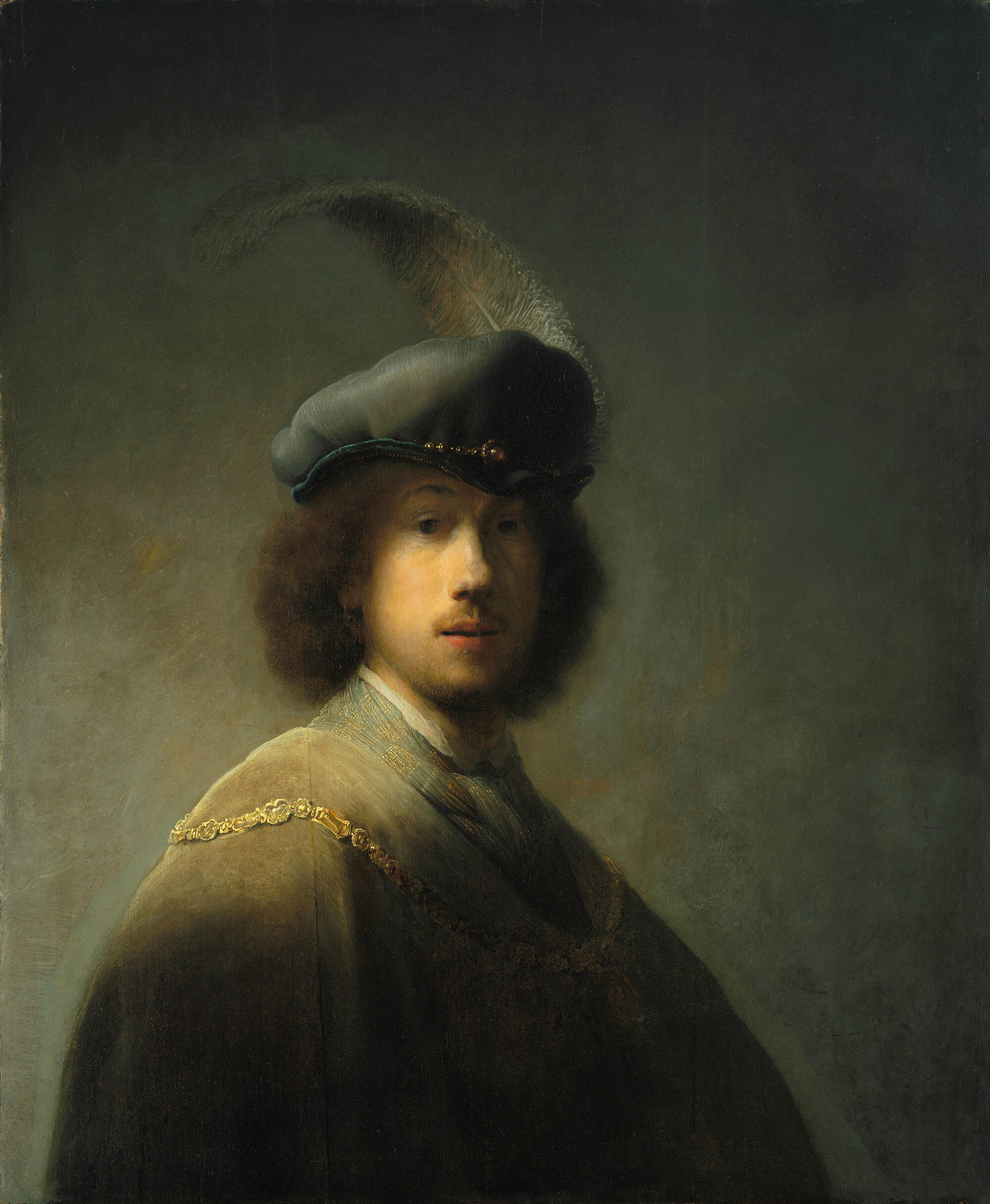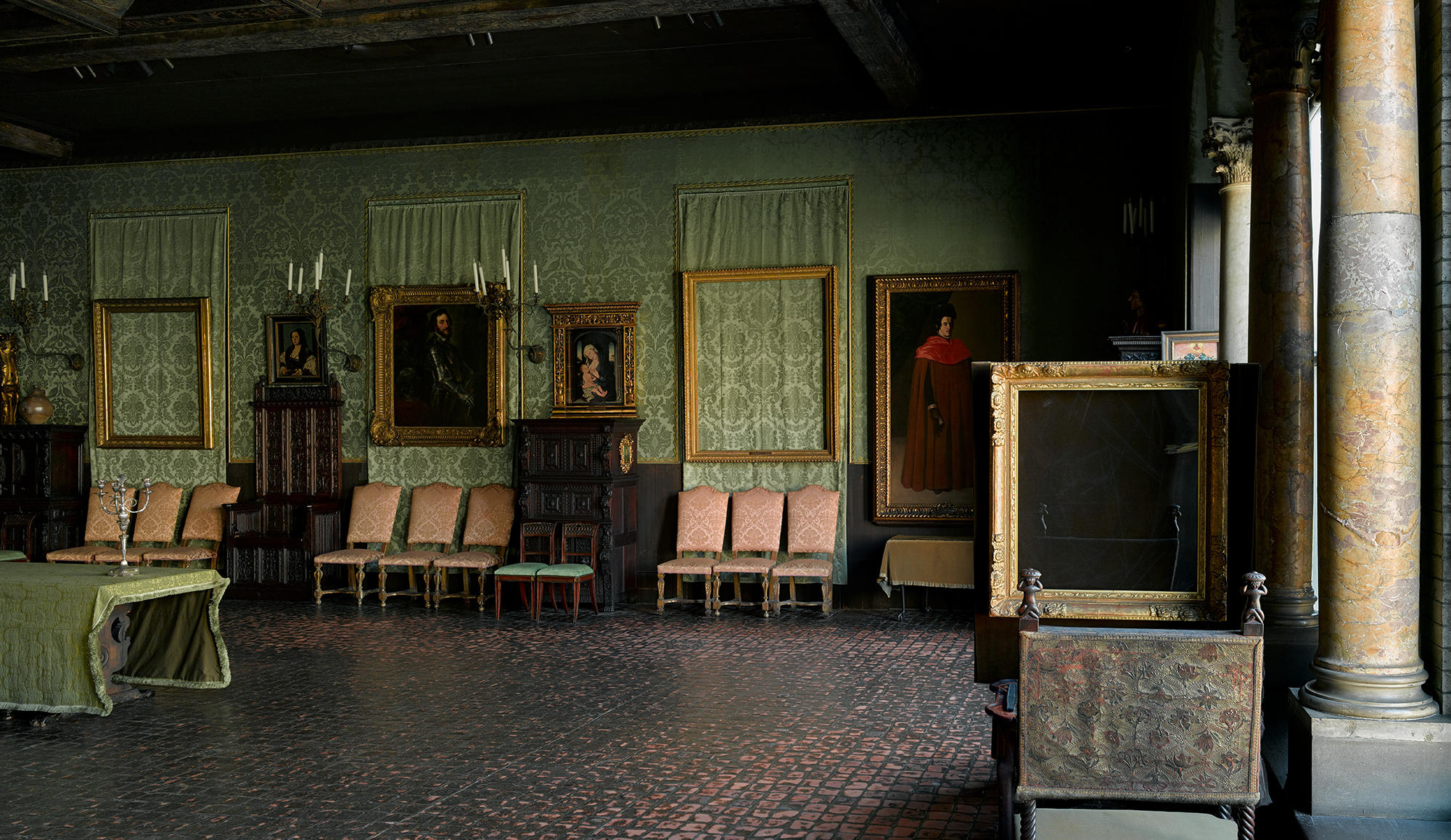In the winter of 1896, Isabella Stewart Gardner opened a letter from art historian, and her frequent advisor, Bernard Berenson. He wrote in gushing prose about the chance to own a painting of unprecedented quality. It was an early work by Rembrandt: one of his earliest self-portraits, painted when the artist was only 23 years old. Its condition was perfect. Rembrandt had applied the paint with characteristic bravura. It simply glowed.

Isabella Stewart Gardner Museum, Boston (P21n6). See it in the Dutch Room.
Rembrandt van Rijn (Dutch, 1606–1669), Self-Portrait, Age 23, 1629. Oil on oak panel, 89.7 x 73.5 cm (35 5/16 x 28 15/16 in.)
Four years earlier, Gardner had secretly outbid two leading museums in her pursuit of Vermeer's The Concert. Berenson was not shy about tapping into her desire to win at her "game." He had honed his sales pitch working with one of London's leading art dealers where he had access to some of the finest works on the market. His letter begged her to leap at this new opportunity.
Now I come to the point of this letter. I am sending you a photograph of one of the most precious pictures in existence, which if not sold by February 18 goes to the National Gallery [London].” This masterpiece you can have for the comparatively small sum of £3000. I shall say no more to urge you but beg you to cable to me directly you have made up your mind about it . . . ‘Yes Rembrandt’ or ‘No Rembrandt’ will do.
For Gardner, it was irresistible. She was driven to overcome all competition for the chance to acquire a work of such outstanding beauty and significance. In short order, she cabled Berenson an enthusiastic reply: YES REMBRANDT.
I am bitten by the Rembrandt and today being Sunday, I wait until tomorrow and then cable . . . YES REMBRANDT . . . What do you think of that!
It was another artworld coup for Gardner. The Rembrandt became the cornerstone of the Gardners' plan for a new museum. From that point on, Gardner determined that she would only buy masterpieces.

Photo: Sean Dungan
The Dutch Room, showing a Venetian chest of drawers, 1750–1799
Although her abiding passion was Italian Renaissance art, Gardner acquired two more paintings by Rembrandt, including his only seascape, and installed them all in the Dutch Room. Those works, which Berenson also helped her acquire, were stolen from the museum in 1990 along with 11 other priceless objects. None of the stolen artwork has yet been recovered.

Isabella Stewart Gardner Museum, Boston (P21w27)
French, Frame for Vermeer's The Concert, 1650–1700. Gilded wood
In September 2024, the Gardner Museum announced plans for a multi-year restoration of the Dutch Room. The floor-to-ceiling conservation project will encompass works of art and architectural elements throughout the gallery including the first comprehensive treatment of the 16th century Italian painted ceiling, reproductions of period textiles, cleaning of the historic terracotta floor tiles, and installation of a new energy efficient lighting system.

Isabella Stewart Gardner Museum, Boston (F21c5)
Italian, Orvieto, Ceiling (detail), about 1500. Painted wood, 890 x 587 cm (350 3/8 x 231 1/8 in.), before its cleaning as part of the Dutch Room restoration project
For more than 25 years, the Gardner Museum has conducted conservation across its historic galleries to preserve the collection and restore the appearance of the Museum as intended by Isabella Stewart Gardner. As part of the Museum’s Strategic Plan, the Dutch Room is the last major gallery to undergo a full restoration. Research by curators and conservators has shed new light on Isabella’s original intentions, which we are excited to share with our visitors. Stay tuned for more about the gallery’s refurbishment.
You May Also Like

Read More on the Blog
Not Your Grandmother’s Silver Cabinet

Read more on the blog
The Five Frames Left Behind

Read More on the Blog
A Mysterious Sitter Prepares for an Overseas Journey